Wigan Warriors
vs.
St Helens Saints

Watch live rugby TV
Match scheduled
Date: 20-06-2010
Time: 16:15 until 18:15
Engage Super League

Watch Wigan Warriors vs St Helens Saints live streaming rugby | Wigan Warriorsvs St Helens Saints live broadcasting rugby vedio online


Watch Argentina Jaguars vs Scotland A live streaming rugby | USA vs France live broadcasting rugby vedio


Watch Italy A vs Romania live streaming rugby | Italy A vs Romania live broadcasting rugby vedio

Watch Georgia vs Namibia live streaming IRB Nations Cup 2010 on 20/06/2010



Homer's Iliad (ca. 675 BC) contains the first detailed account of a boxing fight (Book XXIII).[3] According to the Iliad, Mycenaean warriors included boxing among their competitions honoring the fallen with great cerominies (ca. 1200 BC), though it is possible that the Homeric epics reflect later culture. Another legend holds that the heroic ruler Theseus, said to have lived around the 9th century BC, invented a form of boxing in which two men sat face to face and beat each other with their fists until one of them was killed. In time, the boxers began to fight while standing and wearing gloves (with spikes) and wrappings on their arms below the elbows, although otherwise they were completely naked.
Boxing was first accepted as an Olympic sport in 688 BC, being called Pygme or Pygmachia. Participants trained on punching bags (called a korykos). Fighters wore leather straps (called himantes) over their hands, wrists, and sometimes breast, to protect them from injury. The straps left their fingers free. Legend had it that the Spartans were the first to box as a way to prepare for sword and shield fighting.
In ancient Rome, there were two forms of boxing both coming from Etruscan boxing. The athletic form of boxing remained popular throughout the Roman world. The other form of boxing was gladiatorial. Fighters were usually criminals and slaves who hoped to become champions and gain their freedom; however, free men, women, and even aristocrats also fought. Gladiators wore lead "cestae" over their knuckles and heavy leather straps on their forearms to protect against blows. The deeply scarred and cauliflower eared figure of the Boxer of Quirinal show what a brutal sport it could be (matches often ending in the death or maiming of an opponent).
Eventually, fist fighting became so popular that even emperors started fighting, and the practice was promoted by Caesar Neronis. A fight between the agile Dares and the towering Entellus is described at length in the Roman national epic Aeneid (1st century BC).[4]
In 393 A.D., the Olympics were banned by the Christian emperor Theodosius, and in 400 A.D., boxing was banned altogether by Theodoric the Great as boxing being an insult to God because it disfigures the face, the image of God. However, this edict had little effect outside the major cities of the Eastern Empire.[5] By this time, western Europe was no longer part of the Roman Empire. Boxing remained popular in Europe throughout the Middle Ages and beyond. Wrestling, fencing and racing (both chariot and foot) were never banned by the late Romans, as they did not cause disfigurement.

Records of Classical boxing activity disappeared after the fall of the Roman Empire. However, there are detailed records of various fist-fighting sports that were maintained in different cities and provinces of Italy between the 12th and 17th centuries. There was also a sport in ancient Rus called Fistfight. The sport would later resurface in England during the early 18th century in the form of bare-knuckle boxing sometimes referred to as prizefighting. The first documented account of a bare-knuckle fight in England appeared in 1681 in the London Protestant Mercury, and the first English bare-knuckle champion was James Figg in 1719.[6] This is also the time when the word "boxing" first came to be used. It should be noted, that this earliest form of modern boxing was very different. Contests in Mr. Figg's time, in addition to fistfighting, also contained fencing and cudgeling.
Early fighting had no written rules. There were no weight divisions or round limits, and no referee. In general, it was extremely chaotic. The first boxing rules, called the Broughton's rules, were introduced by heavyweight champion Jack Broughton in 1743 to protect fighters in the ring where deaths sometimes occurred.[7] Under these rules, if a man went down and could not continue after a count of 30 seconds, the fight was over. Hitting a downed fighter and grasping below the waist were prohibited. Broughton also invented and encouraged the use of "mufflers", a form of padded gloves, which were used in training and exhibitions. The first paper on boxing was published in the late 18th century by successful Birmingham boxer 'William Futrell' who remained undefeated until his one hour and seventeen minute fight at Smitham Bottom, Croydon, on July 9, 1788 against a much younger "Gentleman" John Jackson which was attended by the Prince of Wales.
These rules did allow the fighters an advantage not enjoyed by today's boxers: They permitted the fighter to drop to one knee to begin a 30-second count at any time. Thus a fighter realizing he was in trouble had an opportunity to recover. However, this was considered "unmanly"[8] and was frequently disallowed by additional rules negotiated by the Seconds of the Boxers[9]. Intentionally going down in modern boxing will cause the recovering fighter to lose points in the scoring system. Furthermore, as the contestants did not have heavy leather gloves and wristwraps to protect their hands, a certain amount of restraint was required when striking the head.
In 1838, the London Prize Ring rules were codified. Later revised in 1853, they stipulated the following:[10]
Through the late nineteenth century, boxing or prizefighting was primarily a sport of dubious legitimacy. Outlawed in England and much of the United States, prizefights were often held at gambling venues and broken up by police. Brawling and wrestling tactics continued, and riots at prizefights were common occurrences. Still, throughout this period, there arose some notable bare knuckle champions who developed fairly sophisticated fighting tactics.
In 1867, the Marquess of Queensberry rules were drafted by John Chambers for amateur championships held at Lillie Bridge in London for Lightweights, Middleweights and Heavyweights. The rules were published under the patronage of the Marquess of Queensberry, whose name has always been associated with them.
There were twelve rules in all, and they specified that fights should be "a fair stand-up boxing match" in a 24-foot-square or similar ring. Rounds were three minutes long with one minute rest intervals between rounds. Each fighter was given a ten-second count if he was knocked down and wrestling was banned.
The introduction of gloves of "fair-size" also changed the nature of the bouts. An average pair of boxing gloves resembles a bloated pair of mittens and are laced up around the wrists.[12] The gloves can be used to block an opponent's blows. As a result of their introduction, bouts became longer and more strategic with greater importance attached to defensive maneuvers such as slipping, bobbing, countering and angling. Because less defensive emphasis was placed on the use of the forearms and more on the gloves, the classical forearms outwards, torso leaning back stance of the bare knuckle boxer was modified to more modern stance in which the torso is tilted forward and the hands are held closer to the face.
The English case of R v. Coney in 1882 found that a bare-knuckle fight was an assault occasioning actual bodily harm, despite the consent of the participants. This marked the end of widespread public bare-knuckle contests in England.
The first world heavyweight champion under the Queensberry Rules was "Gentleman Jim" Corbett, who defeated John L. Sullivan in 1892 at the Pelican Athletic Club in New Orleans.[13]
Throughout the early twentieth century, boxers struggled to achieve legitimacy, aided by the influence of promoters like Tex Rickard and the popularity of great champions from John L. Sullivan to Jack Dempsey. Shortly after this era, boxing commissions and other sanctioning bodies were established to regulate the sport and establish universally recognized champions.
The Marquess of Queensberry rules have been the general rules governing modern boxing since their publication in 1867.
A boxing match typically consists of a determined number of three-minute rounds, a total of up to 12 rounds (formerly 15). A minute is typically spent between each round with the fighters in their assigned corners receiving advice and attention from their coach and staff. The fight is controlled by a referee who works within the ring to judge and control the conduct of the fighters, rule on their ability to fight safely, count knocked-down fighters, and rule on fouls. Up to three judges are typically present at ringside to score the bout and assign points to the boxers, based on punches that connect, defense, knockdowns, and other, more subjective, measures. Because of the open-ended style of boxing judging, many fights have controversial results, in which one (Or both) fighters believe they have been "robbed" or unfairly denied a victory. Each fighter has an assigned corner of the ring, where his or her coach, as well as one or more "seconds" may administer to the fighter at the beginning of the fight and between rounds. Each boxer enters into the ring from their assigned corners at the beginning of each round and must cease fighting and return to their corner at the signaled end of each round.
A bout in which the predetermined number of rounds passes is decided by the judges, and is said to "go the distance". The fighter with the higher score at the end of the fight is ruled the winner. With three judges, unanimous and split decisions are possible, as are draws. A boxer may win the bout before a decision is reached through a knockout; such bouts are said to have ended "inside the distance". If a fighter is knocked down during the fight, determined by whether the boxer touches the canvas floor of the ring with any part of their body other than the feet as a result of the opponent's punch and not a slip, as determined by the referee, the referee begins counting until the fighter returns to his or her feet and can continue. Should the referee count to ten, then the knocked-down boxer is ruled "knocked out" (whether unconscious or not) and the other boxer is ruled the winner by knockout (KO). A "technical knockout" (TKO) is possible as well, and is ruled by the referee, fight doctor, or a fighter's corner if a fighter is unable to safely continue to fight, based upon injuries or being judged unable to effectively defend themselves. Many jurisdictions and sanctioning agencies also have a "three-knockdown rule", in which three knockdowns in a given round result in a TKO. A TKO is considered a knockout in a fighter's record. A "standing eight" count rule may also be in effect. This gives the referee the right to step in and administer a count of eight to a fighter that he feels may be in danger, even if no knockdown has taken place. After counting the referee will observe the fighter, and decide if he is fit to continue. For scoring purposes, a standing eight count is treated as a knockdown.
In general, boxers are prohibited from hitting below the belt, holding, tripping, pushing, biting, spitting or wrestling. The boxer's shorts are raised so the opponent is not allowed to hit to the groin area. They also are prohibited from kicking, head-butting, or hitting with any part of the arm other than the knuckles of a closed fist (including hitting with the elbow, shoulder or forearm, as well as with open gloves, the wrist, the inside, back or side of the hand). They are prohibited as well from hitting the back, back of the neck or head (called a "rabbit-punch") or the kidneys. They are prohibited from holding the ropes for support when punching, holding an opponent while punching, or ducking below the belt of their opponent (dropping below the waist of your opponent, no matter the distance between). If a "clinch" – a defensive move in which a boxer wraps his or her opponents arms and holds on to create a pause – is broken by the referee, each fighter must take a full step back before punching again (alternatively, the referee may direct the fighters to "punch out" of the clinch). When a boxer is knocked down, the other boxer must immediately cease fighting and move to the furthest neutral corner of the ring until the referee has either ruled a knockout or called for the fight to continue.
Violations of these rules may be ruled "fouls" by the referee, who may issue warnings, deduct points, or disqualify an offending boxer, causing an automatic loss, depending on the seriousness and intentionality of the foul. An intentional foul that causes injury that prevents a fight from continuing usually causes the boxer who committed it to be disqualified. A fighter who suffers an accidental low-blow may be given up to five minutes to recover, after which they may be ruled knocked out if they are unable to continue. Accidental fouls that cause injury ending a bout may lead to a "no contest" result, or else cause the fight to go to a decision if enough rounds (typically four or more, or at least three in a four-round fight) have passed.
Throughout the 17th through 19th centuries, boxing bouts were motivated by money, as the fighters competed for prize money, promoters controlled the gate, and spectators bet on the result. The modern Olympic movement revived interest in amateur sports, and amateur boxing became an Olympic sport in 1908. In their current form, Olympic and other amateur bouts are typically limited to three or four rounds, scoring is computed by points based on the number of clean blows landed, regardless of impact, and fighters wear protective headgear, reducing the number of injuries, knockdowns, and knockouts. Currently scoring blows in amateur boxing are subjectively counted by ringside judges, but the Australian Institute for Sport has demonstrated a prototype of an Automated Boxing Scoring System, which introduces scoring objectivity, improves safety, and arguably makes the sport more interesting to spectators. Professional boxing remains by far the most popular form of the sport globally, though amateur boxing is dominant in Cuba and some former Soviet republics. For most fighters, an amateur career, especially at the Olympics, serves to develop skills and gain experience in preparation for a professional career.
watch live broadcasting Fox Sports Net Fight Night on online tv


The Heineken Cup, known as the H Cup in France due to alcohol advertising laws, is an annual rugby union competition involving leading club, regional and provincial teams from the Six Nations: England, France, Scotland, Wales, Ireland, and Italy. The competition was launched during the European summer of 1995 by the (then) Five Nations Committee, following the advent of professionl rugby union. The tournament was born with the intention of providing a new level of professional European competition. The French clubs have been quite successful in the tournament; the inaugural competition was won by Toulouse. Then in the following year Brive were the champions. Toulouse became the first ever, and so far only team to win the competition more than twice, becoming champions again in 2003, 2005, and 2010.
The second-tier European Challenge Cup was launched the year after the Heineken Cup. Currently, all Top 14 teams that do not qualify for the Heineken Cup compete in the European Challenge Cup. The first four competitions were all won by French sides—Bourgoin in 1997, Colomiers in 1998, Clermont (then known as Montferrand) in 1999, and Pau in 2000. Since then, French sides have made the finals five more times, with Clermont winning in 2007.
The European Shield, which ran from 2002–03 to 2004–05, was a repechage competition that involved first-round losers in the European Shield. It was scrapped when the European Challenge Cup was revamped for the 2005–06 season. This trophy was claimed by a French club in each of its three seasons—Castres in 2003, Montpellier in 2004, and Auch in 2005.
France, nicknamed Les Bleus (The Blues), is a top tier nation, as cited by the International Rugby Board. France competes in the Six Nations Championship annually. Although France have never won the World Cup, they have in fact appeared in both the 1987 and the 1999 finals — losing to New Zealand and Australia respectively. In addition to being runners-up on two occasions, France has always appeared in the semi-finals — with the exception of the 1991 Rugby World Cup where they were knocked out in the quarter finals. The French style of play is renowned for its paradoxical combination of rugged physicality and inspired grace. This particular style of play has been nicknamed the "French flair".

The National Rugby Centre was opened by then French President Jacques Chirac in November 2002.[7] The facility cost GP£46 million (approx. €68 million, c.2007), and is located in the village of Marcoussis, south of Paris.[7][8] The facility covers 20 hectares (49 acres) and includes five rugby pitches (one of them covered, and two floodlit), a gym, medical facilities, a swimming pool, media centre, and library.[9] Living quarters are also included, with 30 rooms which are each named after a championship winning French club. The living quarters also have a dedicated restaurant. France's under-19 team are permanently based at the NRC, and provide regular opposition for the French national team during training.[9]
France have won 354 of their 635 test matches, a win record of 55.66%.[32][33] When the World Rankings were introduced by the International Rugby Board (IRB) in 2003 France were ranked fifth. During November 2003 France briefly occupied third place before falling to fourth by December that year. After falling to fifth during November 2004, France rose again to fourth by April 2005. During early 2006, France rose again, peaking at second in July that year. France were ranked number two in the world until falling to third in June 2007 after two successive defeats to the All Blacks. They then fell to fifth after losing to Argentina in the opening match of the 2007 World Cup.[34]
Their test match record against all nations, up until 22 June 2009, is as follows:[32][35]
Against | Played | Won | Drawn | Lost | Win percentage |
|---|---|---|---|---|---|
| 41 | 30 | 1 | 10 | 73.2% | |
| 36 | 16 | 2 | 18 | 44.4% | |
| British and Irish Lions | 1 | 0 | 0 | 1 | 0% |
| 7 | 6 | 0 | 1 | 85.7% | |
| 2 | 2 | 0 | 0 | 100% | |
| 1 | 1 | 0 | 0 | 100% | |
| 90 | 35 | 7 | 48 | 39% | |
| 7 | 7 | 0 | 0 | 100% | |
| 1 | 1 | 0 | 0 | 100% | |
| 15 | 13 | 0 | 2 | 86.7% | |
| 86 | 52 | 5 | 29 | 60.7% | |
| 27 | 26 | 0 | 1 | 96.3% | |
| 2 | 2 | 0 | 0 | 100% | |
| 5 | 5 | 0 | 0 | 100% | |
| 48 | 12 | 1 | 35 | 25.5% | |
| 50 | 40 | 2 | 8 | 80% | |
| 1 | 1 | 0 | 0 | 100% | |
| 83 | 46 | 3 | 34 | 55% | |
| 37 | 11 | 6 | 20 | 29.7% | |
| 3 | 1 | 0 | 2 | 33.3% | |
| 1 | 1 | 0 | 0 | 100% | |
| 3 | 2 | 0 | 1 | 66.7% | |
| 1 | 1 | 0 | 0 | 100% | |
| 7 | 6 | 0 | 1 | 85.7% | |
| 86 | 40 | 3 | 43 | 46.4% | |
| 1 | 1 | 0 | 0 | 100% | |
| 1 | 1 | 0 | 0 | 100% | |
| Overall | 636 | 354 | 30 | 252 | 55.7% |
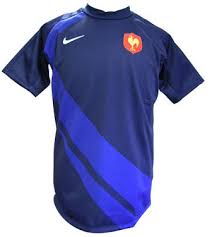 | 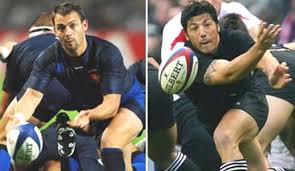 |  | 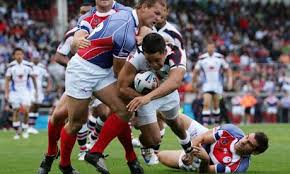 |  | 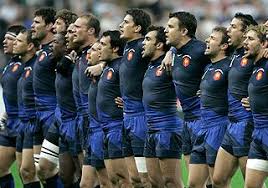 |
Marc Lièvremont announced France's squad for their tests against South Africa and Argentina. [36] After Yannick Jauzion pulled out of the squad, Florian Fritz was called up to replace him. [37] Imanol Harinordoquy withdrew from the squad due to injury and was replaced by Grégory Lamboley. [38] Mathieu Bastareaud was also forced to withdraw and was replaced by Lionel Mazars. [39]
Head Coach: Marc Lièvremont
|
Six former French national team players have been inducted into the International Rugby Hall of Fame: Serge Blanco, André Boniface, Jo Maso, Jean Prat, Jean-Pierre Rives and Philippe Sella.[40] Sella has the added honour of induction into the IRB Hall of Fame.[41]
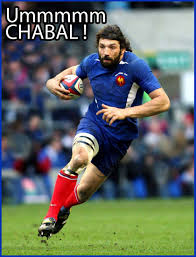 | 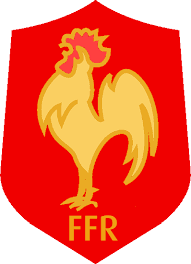 | 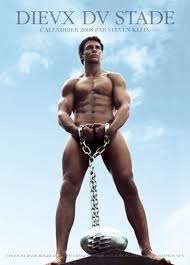 | 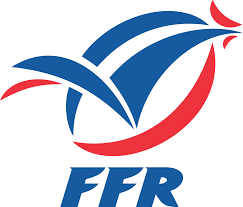 |  | 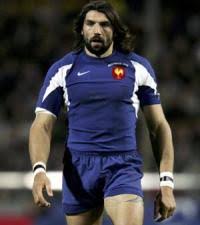 |
Watch USA vs France live streaming Churchill Cup 2010 final | USA vs France live broadcasting rugby vedio